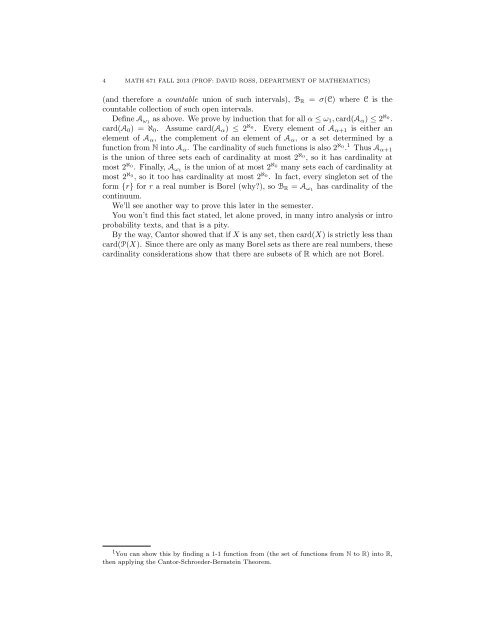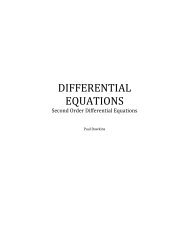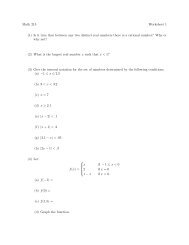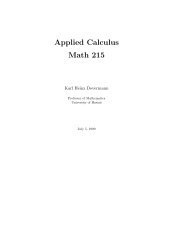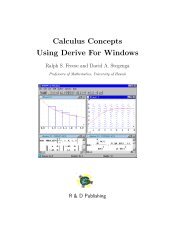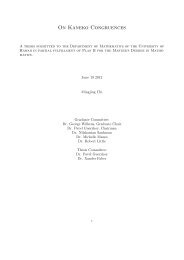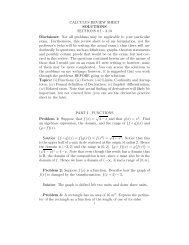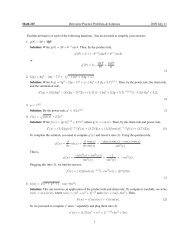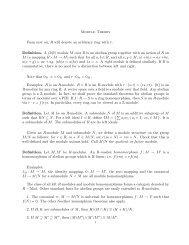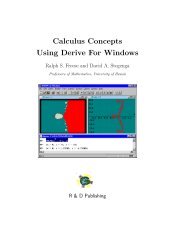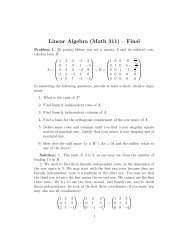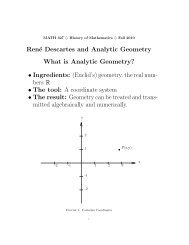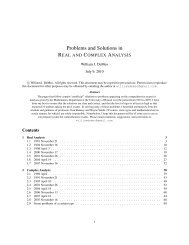TRANSFINITE INDUCTION FOR MEASURE THEORY
TRANSFINITE INDUCTION FOR MEASURE THEORY
TRANSFINITE INDUCTION FOR MEASURE THEORY
You also want an ePaper? Increase the reach of your titles
YUMPU automatically turns print PDFs into web optimized ePapers that Google loves.
4 MATH 671 FALL 2013 (PROF: DAVID ROSS, DEPARTMENT OF MATHEMATICS)<br />
(and therefore a countable union of such intervals), B R = σ(C) where C is the<br />
countable collection of such open intervals.<br />
Define A ω1 as above. We prove by induction that for all α ≤ ω 1 , card(A α ) ≤ 2 ℵ0 .<br />
card(A 0 ) = ℵ 0 . Assume card(A α ) ≤ 2 ℵ0 . Every element of A α+1 is either an<br />
element of A α , the complement of an element of A α , or a set determined by a<br />
function from N into A α . The cardinality of such functions is also 2 ℵ0 . 1 Thus A α+1<br />
is the union of three sets each of cardinality at most 2 ℵ0 , so it has cardinality at<br />
most 2 ℵ0 . Finally, A ω1 is the union of at most 2 ℵ0 many sets each of cardinality at<br />
most 2 ℵ0 , so it too has cardinality at most 2 ℵ0 . In fact, every singleton set of the<br />
form {r} for r a real number is Borel (why?), so B R = A ω1 has cardinality of the<br />
continuum.<br />
We’ll see another way to prove this later in the semester.<br />
You won’t find this fact stated, let alone proved, in many intro analysis or intro<br />
probability texts, and that is a pity.<br />
By the way, Cantor showed that if X is any set, then card(X) is strictly less than<br />
card(P(X). Since there are only as many Borel sets as there are real numbers, these<br />
cardinality considerations show that there are subsets of R which are not Borel.<br />
1 You can show this by finding a 1-1 function from (the set of functions from N to R) into R,<br />
then applying the Cantor-Schroeder-Bernstein Theorem.


